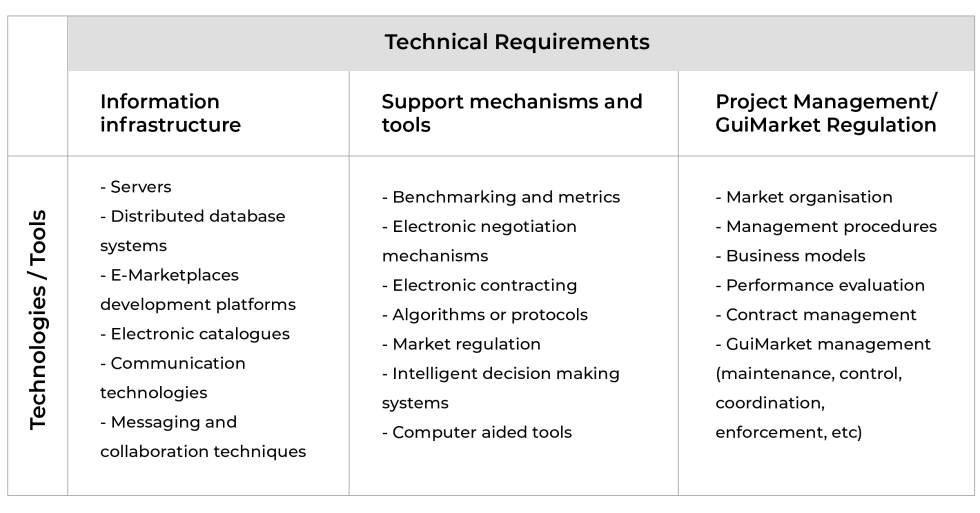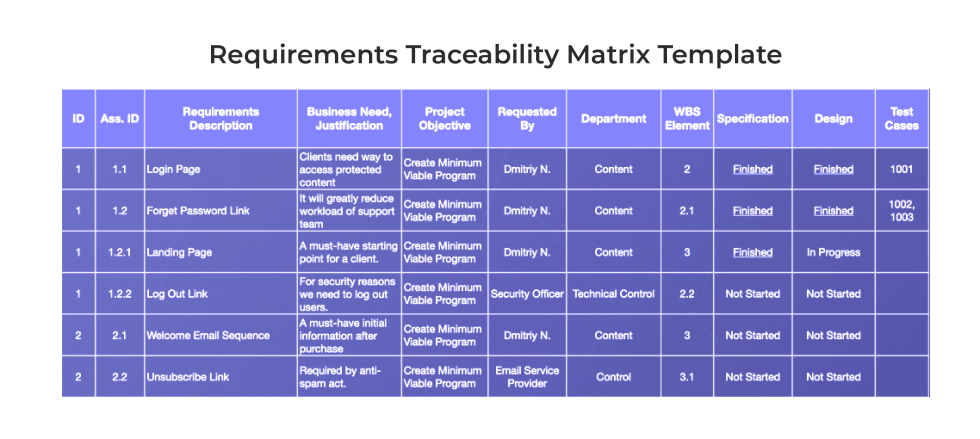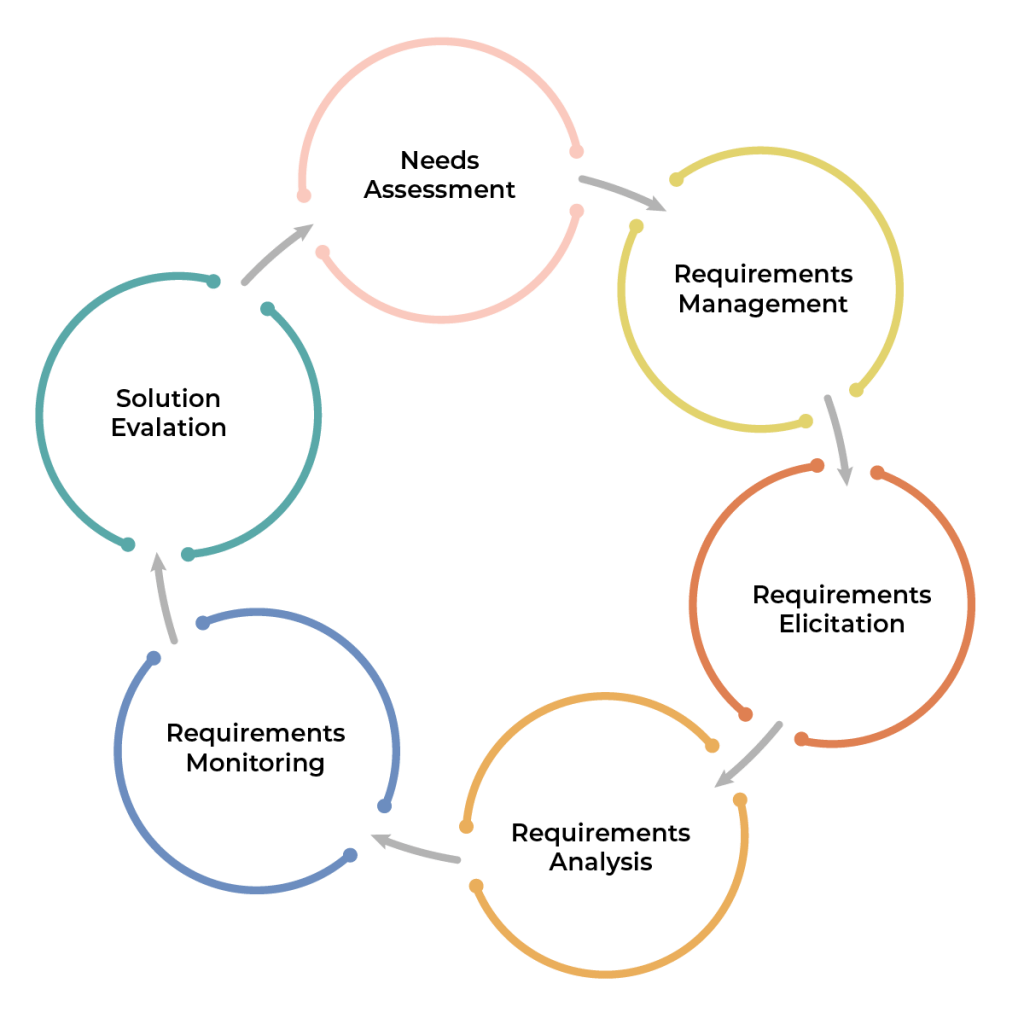Project Management Guide
Project Management Guide
What Is Project Management?
What Is a Project?
Why Is Project Management Important?
Project Life Cycle Phases
- Project Initiation
- Project Planning
- Project Execution
- Project Monitoring
- Project Closure
Project Management Methodologies
- Waterfall Project Management
- Critical Path Method
- Critical Chain Project Management
- Agile Project Management
- Scrum Project Management
- Kanban Project Management
- Lean Project Management
- Six Sigma Project Management
- PRINCE2
- PRiSM
- PMBOK Method
Project Management FAQ
What are Technical Requirements in Project Management?
Effective project management requires taking stock of, handling, estimating, and auditing all elements and variables of a project. One such thread in this fabric revolves around managing the business requirements.
Project requirements outline the minimum benchmark that the final product must satisfy to resolve the end user’s pain points. Such requirements could emerge from multiple sources, such as regulatory guidelines or ongoing market trends. Essentially, it contains the set features and functions necessary to meet the goal of the project. In this post, we will be examining the concept of technical requirements in project management. Plus, we will touch upon how to go perform requirements collection and documentation, along with a few useful tips. Let’s get started.
What are Technical Requirements?
Now that you have a high-level understanding of what counts as “requirements,” narrowing down the scope and meaning of technical requirements becomes easier. Technical requirements cover the technical issues that must be overcome for the successful development and operation of the project. It is a form of a functional project requirement that surrounds the question: How will the product solve this question? What are the technical resources that you will need to fulfill such requests? As such, it involv es the construction of the problem-solving system and implementing it within the project. It may even extend to measuring the performance, availability, and reliability of the operational characteristics to quantify its functioning.
es the construction of the problem-solving system and implementing it within the project. It may even extend to measuring the performance, availability, and reliability of the operational characteristics to quantify its functioning.
For instance, suppose that you are working on an enterprise software project that has a module supporting Work From Home (WFH). Accordingly, you will have to develop a centralized repository that authenticates authorization and allows access to data. You may also have to make considerations for facilitating collaborations between terminals. The resultant technical requirements would be a cumulation of several features and functions, such as the language in which your team will program the software, its database architecture, the operating system of the terminals, hardware requirements, data transfer and security protocols, minimum internet speed for establishing network communications, and so on! Similarly, assume that you are manufacturing an Automated Teller Machine (ATM). In this case, you would have to identify the communication channel to connect the device with the customer’s database. Other technical requirements would be monitoring cash resource availability, reliability of operations, and the time taken for process completion.
Why Should Project Managers Document Technical Requirements?
From the above two examples, it is evident that the technical requirements vary vastly depending on the project. For some, it is a layered web of requirements, which will require a highly detailed and systematic approach for identifying these business requirements. So does it even matter? Yes. It does.
Here’s why you should prepare a technical requirements docket:
- Depending on the project complexity, it indicates the need for creating a sub-task or hyper-focused mini-project during the project planning stage.
- It solidifies project scope and prevents any form of creep that may take place within the product’s features and functions.
- As it can be passed on from one team to another, it acts as a point of reference and a guide for the technical resources used so far.
- They help maintain a single-focused goal on the desired technical results.
How to Collect and Document Technical Requirements in a Project?
The process of collecting and documenting the technical requirements of a project is quite straightforward and involves the following steps:
Collect Inputs From All Sources
As stated previously, business requirements could arise from any touchpoint that interacts with the product. This list includes stakeholders, project managers, developers, customers, and even end-users. Thus, the first course of action would be to conduct surveys or interviews to collect feedback on what are the minimum expectations.

Upon shortlisting the relevant technical requirements, you may consider having an internal meeting between teams to weed out the list further.
Perform Usage Analysis
Once you have zeroed in on the basic technical requirements, it is time to analyze the ongoing market trends. At the same time, you will also have to profile the end-user and analyze their behavior patterns. Combine the findings of the two to determine the level of performance your product will have to deliver.
Build Use Cases and Prototype
After building the model framework, you need to test it through typical interactions. Experiment with it with various use cases and prepare a detailed report including case diagrams.
Factor in Technical Qualities
In the case of hardware and software components, you will have to describe and quantify certain technical qualities like:
- Resource or Product Availability
- System latency
- Performance
- Security
- Scalability
- Serviceability
Say you are developing a website for a client. The technical qualities would include details such as uptime, page responsiveness, load times, security protocols, response to increasing/decreasing traffic, hosting and maintenance, backup frequency, etc.
Create and Validate Technical Requirements Document
Now that the foundational work is complete, it is all about compiling it into a detailed technical requirements document. Ideally, it should contain:
- The end-user needs and expectations, along with the usability and applicability of the product in the practical world.
- Team structure detailing the skills and competencies required, along with contingency plans.
- Product definition and details starting with the background research carried out before commencing work right until features and functions identified during project planning.
- Prototypes and the corresponding outcomes that customers can anticipate upon the delivery of the product.
- Complete lifecycle of the project development process, including project scope planning, contingencies, software/hardware, people and processes, project management changes, etc.
- Define all system requirements, expected performance, ideal functions, risks, limitations, and any other considerations (environmental, regulatory, etc.)
Once you have used these data sets to create your technical requirements document, circulate it amongst your team members, stakeholders, and customers to capture their inputs. Upon agreeing to it unanimously, you may have to forward it to the business leaders and high-level executives to seek approval for the formal recognition of the document.
Tips for Recording and Managing Technical Requirements
Follow these tips and tricks while collecting, writing, and managing the technical requirements of a project:
- Clearly define the functional and technical requirements of a task and justify their roles.
- When dealing with physical goods, note down the specifications, such as the size, shape, weight, color, etc.
- For digital requirements, list the features and functions such as the operating system, interface, portability, etc.
- Despite being technical in nature, the document is still a business document that will change many hands. Hence, keep the language simple and unambiguous.
- Use bullets to increase readability and be concise. Each sentence or paragraph must convey only a single central idea.
- Incorporate rich media to illustrate your point. This technique is particularly useful for test scenarios, outcome predictions, and prototyping.
- Assemble a team with members having the requisite technical and professional attributes to drive the project to its success.
- List out the milestones and the corresponding deadlines.
- Conduct frequent meetings with the internal and external stakeholders to reiterate the final goal of the project and align the progress accordingly.
- Use templates and software wherever possible to manage technical requirements and resources.

Final Thoughts
According to the Project Management Institute, poor project requirements management could result in project failure. The effect can be even more catastrophic when the requirement is as niche as technical requirements. Fortunately, you can mitigate it by learning the ropes of requirements-driven project management using the guide above. With enough time and experience, you will soon be in a position to enhance the success probability for all your projects!
